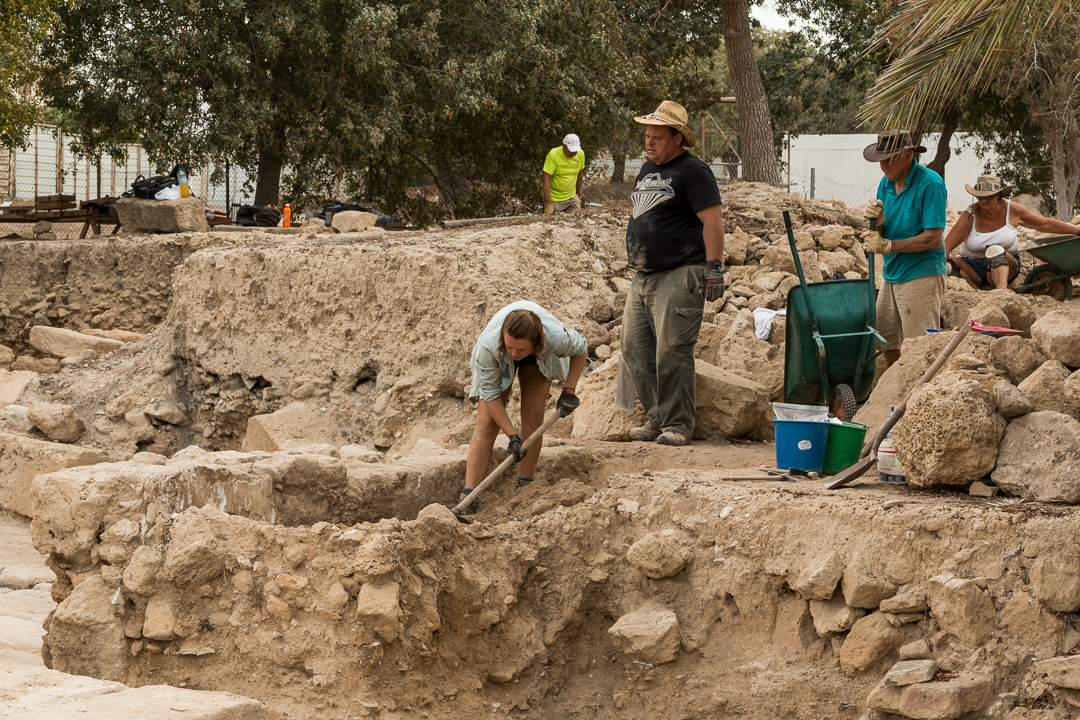This is my second season at Paphos. Although I largely work in Australian Indigenous archaeology, Paphos provides the chance for different challenges and excavation methods together with the opportunity for a classical education.
My trench is excavating a nineteenth century wall built over a partly excavated Roman road. Once completed, we’ll record, and then demolish to reveal a further section of the road. Aside from large amounts of pottery, small levels of bone and glass we’ve uncovered a Roman marble capitol, in quite reasonable condition, complete with the traditional carved acanthus leaves, symbolic in the Mediterranean world for immortality. Also located three sections of a Hellenistic period architrave, one including the maker’s mark, carved into separate limestone blocks.
Moving a rock today revealed some Cypriot wildlife. A young snake, about 40cm. quickly wriggled away. Very colourful markings and I suspect it is what’s known as a Coin Snake, because of its distinctive circular marking. Apparently it’s very adept at climbing walls. Cyprus has several varieties of snake, many very colourful, however only a few are regarded as poisonous. The Coin Snake, which grows to about 1.7m., is not venomous, but can certainly inflict a painful bite. Cyprus’ most dangerous snake is the Blunt - Nosed Viper, which largely inhabits the north of the island. Can be up to 1.5m. with a potentially deadly bite.
Aside from archaeological activity, I’m continuing research for my Master’s thesis with the working title The Variety and Quality of Cypriot Ice Creams and Sorbets. Currently working my way through 44 varieties at my favourite shop. Given the complexity of the task, I suspect at least one further season will be necessary.
Hugh Watt
Excavator

 RSS Feed
RSS Feed